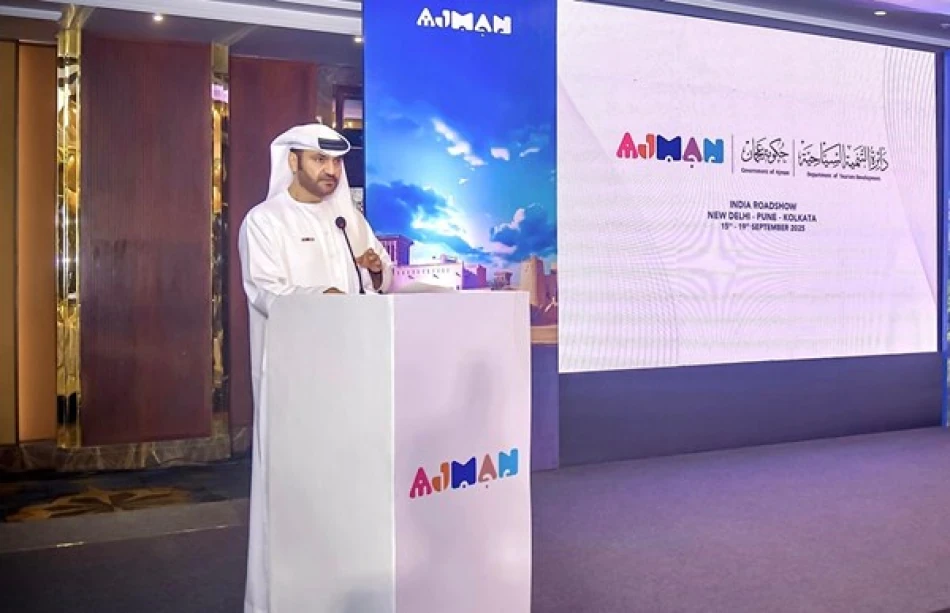
Ajman Tourism Concludes Successful Promotional Tour in India, Highlighting Emirate's Allure
Ajman Bets Big on India Tourism as UAE Emirate Hunts for New Growth Markets
Ajman's tourism department just wrapped up a five-day promotional tour across India, signaling the UAE emirate's push to capture a bigger slice of Asia's growing travel market. The move comes as smaller UAE destinations look beyond traditional European and American tourists to fuel their economic diversification plans.
Why India Matters for Ajman's Tourism Strategy
The tour, led by Mahmoud Khalil Al Hashemi, director general of Ajman's Tourism Development Department, hit three major Indian cities: New Delhi, Pune, and Kolkata. These aren't random stops. India's middle class is expanding rapidly, and outbound tourism from the country has been climbing steadily since pandemic restrictions lifted.
For Ajman, this represents a smart pivot. While Dubai and Abu Dhabi dominate headlines, smaller emirates like Ajman need to work harder to stand out. India offers a promising opportunity because Indian travelers already know the UAE well, but many stick to Dubai and Abu Dhabi.
Learning from Regional Success Stories
This strategy mirrors what other regional tourism hubs have done successfully. Singapore has been courting Indian tourists for years, focusing on family-friendly attractions and cultural connections. Thailand has built entire tourism campaigns around Indian preferences, from Bollywood film locations to vegetarian-friendly dining options.
The UAE as a whole already attracts significant Indian tourism - Indians consistently rank among the top visitor nationalities. But most of that traffic concentrates in the bigger emirates. Ajman is essentially trying to redirect some of that existing flow.
What Ajman Brings to the Table
During the meetings, Ajman officials highlighted the emirate's tourism assets. While it can't compete with Dubai's glitz or Abu Dhabi's cultural attractions, Ajman offers something different: a more affordable, authentic Emirati experience.
The emirate has been developing its coastline, heritage sites, and positioning itself as a gateway for visitors who want to experience traditional UAE culture without the premium prices of its larger neighbors.
The Bigger Economic Picture
Al Hashemi framed this tour as part of a broader economic strategy. Tourism diversification isn't just about getting more visitors - it's about reducing dependence on traditional revenue sources and creating jobs for locals.
For investors watching UAE tourism trends, Ajman's approach suggests the smaller emirates are getting more aggressive about competing for market share. This could mean more investment in infrastructure, hotels, and attractions across these markets.
What Comes Next
The India tour is just the beginning. Al Hashemi announced plans for similar promotional visits to China and other international markets. This suggests Ajman is taking a systematic approach to tourism development rather than hoping visitors will simply discover them organically.
China represents an even bigger opportunity than India, given Chinese tourists' higher spending power. But it's also more competitive, with destinations worldwide fighting for Chinese attention.
The success of these efforts will likely depend on whether Ajman can offer something genuinely different from its larger neighbors, and whether it can build the infrastructure and partnerships needed to handle increased visitor flows. For now, the emirate seems committed to trying.
Most Viewed News

 Layla Al Mansoori
Layla Al Mansoori






